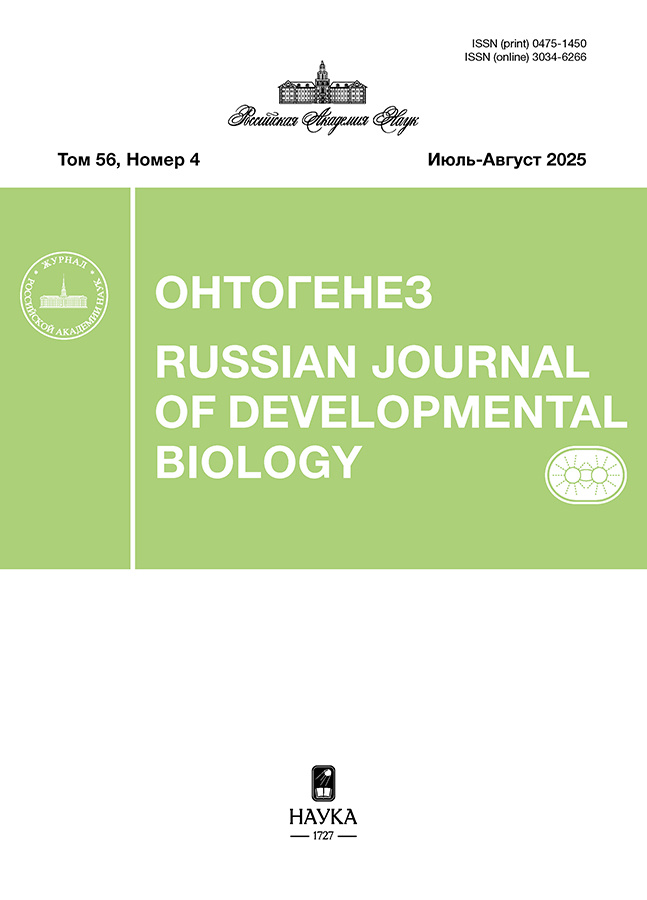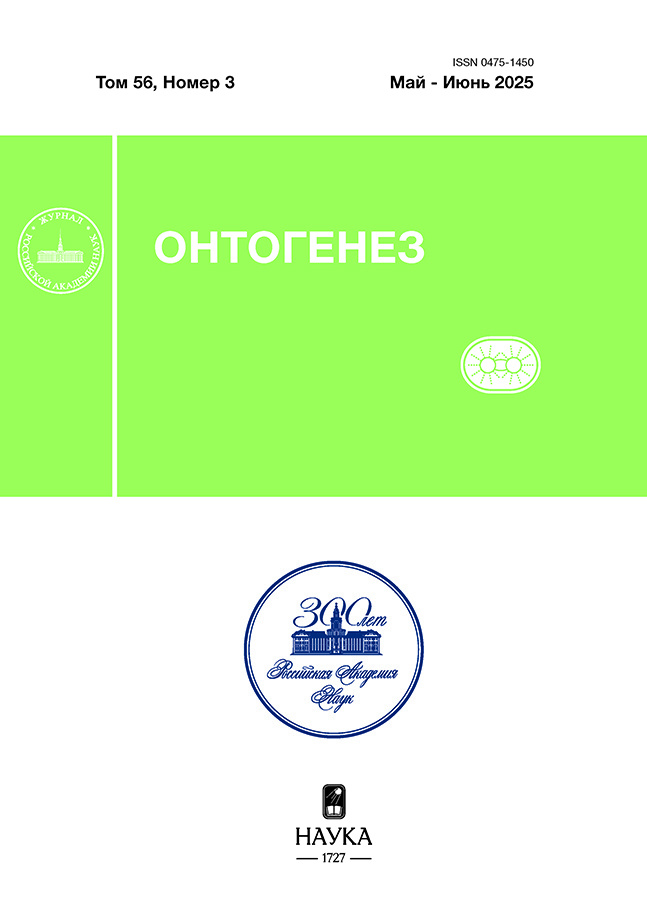Происхождение и эволюция гомеобоксных генов из класса ANTP
- Авторы: Кулакова М.А.1
-
Учреждения:
- Санкт-Петербургский государственный университет
- Выпуск: Том 56, № 3 (2025)
- Страницы: 95-105
- Раздел: ОБЗОРЫ
- URL: https://pediatria.orscience.ru/0475-1450/article/view/688216
- DOI: https://doi.org/10.31857/S0475145025030013
- EDN: https://elibrary.ru/KXXZDN
- ID: 688216
Цитировать
Полный текст
Аннотация
Гены из класса ANTP известны как эволюционно консервативные и иерархически высокие регуляторы развития. Это самые изученные и самые многочисленные гомеобоксные гены животных. Они кодируют гомеодоменные транскрипционные факторы и обладают набором уникальных особенностей, таких как: кластерность, колинеарность, эволюционная консервативность и последовательная вовлеченность в самые разные дифференцировки на протяжении всего онтогенеза многоклеточных животных.
Первые гены ANTP (из подкласса NK) появляются у гребневиков и губок, поэтому эволюцию Metazoa от общего одноклеточного предка часто ассоциируют с возникновением класса ANTP (Larroux et al., 2007; Moroz et al., 2014). Филогенетический анализ гомеобоксных генов, выполненный на широкой выборке таксонов базальных Metazoa, показал, что ANTP-гены из подклассов Hox и ParaHox возникли у последнего общего предка Cnidaria и Bilateria. Эти новые данные порождают новые вопросы. Как эволюция кластеров соотносится с эволюцией животных? Какие функции появились у новых генов, а какие были унаследованы от NK-генов предка? Какие изменения в их регуляции могли повлиять на эволюцию планов организации Metazoa? Можно ли в принципе ответить на эти вопросы, изучая современных многоклеточных?
Обзор нацелен на разрешение этих и ряда других вопросов эволюции кластерных генов ANTP. Отдельно обсуждается концепция “мегакластера” — гипотетической синтении, которая объединяла все подклассы генов ANTP на заре эволюции Metazoa.
Удешевление технологий секвенирования дает некоторую надежду на ответы, потому что вводит в круг моделей множество новых видов. Чем шире этот круг, тем проще найти универсальные и частные закономерности молекулярной и морфологической эволюции.
Ключевые слова
Полный текст
Об авторах
М. А. Кулакова
Санкт-Петербургский государственный университет
Автор, ответственный за переписку.
Email: m.kulakowa@spbu.ru
Россия, 199034, Санкт-Петербург, Старый Петергоф, Ораниенбаумское шоссе, д. 2
Список литературы
- Albertin C.B., Medina-Ruiz S., Mitros T. et al. Genome and transcriptome mechanisms driving cephalopod evolution // Nat. Commun. 2022. V. 13(1). Art. no. 2427. https://doi.org/10.1038/s41467-022-29748-w
- Azpiazu N., Frasch M. Tinman and bagpipe: Two homeo box genes that determine cell fates in the dorsal mesoderm of Drosophila // Genes Dev. 1993. V. 7(7B). P. 1325–1340. https://doi.org/10.1101/gad.7.7b.1325
- Awgulewitsch A. Hox in hair growth and development // Naturwissenschaften. 2003 V. 90(5). P. 193–211. https://doi.org/10.1007/s00114-003-0417-4
- Battulin N., Fishman V.S., Mazur A.M. et al. Comparison of the three-dimensional organization of sperm and fibroblast genomes using the Hi-C approach // Genome biology. 2015. V. 16. P. 1–15.
- Brooke N.M., Garcia-Fernàndez J., Holland P.W. The ParaHox gene cluster is an evolutionary sister of the Hox gene cluster // Nature. 1998. V. 392(6679). P. 920–922. https://doi.org/10.1038/31933
- Bürglin T.R., Affolter M. Homeodomain proteins: An update // Chromosoma. 2016. V. 125(3). P. 497–521. https://doi.org/10.1007/s00412-015-0543-8
- Butts T., Holland P.W., Ferrier D.E. The urbilaterian Super-Hox cluster // Trends Genet. 2008. V. 24(6). P. 259–262. https://doi.org/10.1016/j.tig.2007.09.006
- Cannon J.T., Vellutini B.C., Smith J. 3rd, Ronquist F., Jondelius U., Hejnol A. Xenacoelomorpha is the sister group to Nephrozoa // Nature. 2016. V. 530(7588). P. 89–93. https://doi.org/10.1038/nature16520
- Chan C., Jayasekera S., Kao B., Páramo M., von Grotthuss M., Ranz J.M. Remodelling of a homeobox gene cluster by multiple independent gene reunions in Drosophila // Nat. Commun. 2015. V. 6. Art. no. 6509. https://doi.org/10.1038/ncomms7509
- Chiori R., Jager M., Denker E., Wincker P., Da Silva C., Le Guyader H., Manuel M., Quéinnec E. Are Hox genes ancestrally involved in axial patterning? Evidence from the hydrozoan Clytia hemisphaerica (Cnidaria). PLoS One. 2009. V. 4(1). Art. no. e4231. https://doi.org/10.1371/journal.pone.0004231
- Ferrier D.E.K. Evolution of homeobox gene clusters in animals: the giga-cluster and primary vs. secondary clustering // Frontiers in Ecology and Evolution. 2016. V. 4. P. 36.
- Fröbius A.C., Funch P. Rotiferan Hox genes give new insights into the evolution of metazoan bodyplans // Nat. Commun. 2017. V. 8(1). P. 9. https://doi.org/10.1038/s41467-017-00020-w
- Garcia-Fernàndez J. The genesis and evolution of homeobox gene clusters // Nat. Rev. Genet. 2005. V. 6(12). P. 881–892. https://doi.org/10.1038/nrg1723
- Guiglielmoni N., Rivera-Vicéns R., Koszul R., Flot J.F. A deep dive into genome assemblies of non-vertebrate animals // Peer Community Journal. 2022. V. 2. Art. no. e29
- He S., Del Viso F., Chen C.Y., Ikmi A., Kroesen A.E., Gibson M.C. An axial Hox code controls tissue segmentation and body patterning in Nematostella vectensis // Science. 2018. V. 361(6409). P. 1377–1380. https://doi.org/10.1126/science.aar8384
- Hecox-Lea B.J., Mark Welch D.B. Evolutionary diversity and novelty of DNA repair genes in asexual Bdelloid rotifers // BMC Evol. Biol. 2018. V. 18(1). P. 177. https://doi.org/10.1186/s12862-018-1288-9
- Holland P.W., Booth H.A., Bruford E.A. Classification and nomenclature of all human homeobox genes // BMC Biol. 2007. V. 5. P. 47. https://doi.org/10.1186/1741-7007-5-47. PMID: 17963489; PMCID: PMC2211742.
- Holland P.W. Evolution of homeobox genes // Wiley Interdiscip Rev. Dev. Biol. 2013. V. 2(1). P. 31–45 https://doi.org/10.1002/wdev.78
- Hombría J.C., García-Ferrés M., Sánchez-Higueras C. Anterior Hox genes and the process of cephalization // Front. Cell Dev. Biol. 2021. V. 9. P. 718175. https://doi.org/10.3389/fcell.2021.718175
- Hui J.H., McDougall C., Monteiro A.S., Holland P.W., Arendt D., Balavoine G., Ferrier D.E. Extensive chordate and annelid macrosynteny reveals ancestral homeobox gene organization // Mol. Biol. Evol. 2012. V. 29(1). P. 157–165. https://doi.org/10.1093/molbev/msr175
- Ikuta T., Yoshida N., Satoh N., Saiga H. Ciona intestinalis Hox gene cluster: Its dispersed structure and residual colinear expression in development // Proc. Natl. Acad. Sc.i USA. 2004. V. 101(42). P. 15118–15123. https://doi.org/10.1073/pnas.0401389101
- Jagla K., Bellard M., Frasch M. A cluster of Drosophila homeobox genes involved in mesoderm differentiation programs // Bioessays. 2001. V. 23(2). P. 125–133.
- https://doi.org/10.1002/1521-1878(200102)23:2 <125:: AID-BIES1019>3.0.CO;2-C
- Kaul-Strehlow S., Urata M., Praher D., Wanninger A. Neuronal patterning of the tubular collar cord is highly conserved among enteropneusts but dissimilar to the chordate neural tube // Sci. Rep. 2017. V. 7(1). P. 7003. https://doi.org/10.1038/s41598-017-07052-8
- Khalturin K., Shinzato C., Khalturina M. et al. Medusozoan genomes inform the evolution of the jellyfish body plan // Nat. Ecol. Evol. 2019. V. 3(5). V. 811–822.
- https://doi.org/10.1038/s41559-019-0853-y
- Kim Y., Nirenberg M. Drosophila NK-homeobox genes // Proc. Natl. Acad. Sci.U S A. 1989. V. 86(20). P. 7716–7720. https://doi.org/10.1073/pnas.86.20.7716
- Kulakova M.A., Cook C.E., Andreeva T.F. ParaHox gene expression in larval and postlarval development of the polychaete Nereis virens (Annelida, Lophotrochozoa) // BMC Dev. Biol. 2008. V. 8. P. 61.
- Maconochie M., Nonchev S., Morrison A., Krumlauf R. Paralogous Hox genes: Function and regulation // Annu. Rev. Genet. 1996. V. 30. P. 529–556. https://doi.org/10.1146/annurev.genet.30.1.529
- Matus D.Q., Halanych K.M., Martindale M.Q. The Hox gene complement of a pelagic chaetognath, Flaccisagitta enflata // Integr. Comp. Biol. 2007. V. 47(6). P. 854–864. https://doi.org/10.1093/icb/icm077
- Mio C., Baldan F., Damante G. NK2 homeobox gene cluster: Functions and roles in human diseases // Genes Dis. 2022. V. 10(5). P. 2038–2048. https://doi.org/10.1016/j.gendis.2022.10.001
- Moroz L.L., Kocot K.M., Citarella M.R. et al. The ctenophore genome and the evolutionary origins of neural systems // Nature. 2014. V. 510(7503). V. 109–114. https://doi.org/10.1038/nature13400
- Nong W., Cao J., Li Y., Qu Z. et al. Jellyfish genomes reveal distinct homeobox gene clusters and conservation of small RNA processing // Nat. Commun. 2020. V. 11(1). P. 3051. https://doi.org/10.1038/s41467-020-16801-9
- Paps J., Rossi M.E., Bowles A.M.C., Álvarez-Presas M. Assembling animals: Trees, genomes, cells, and contrast to plants // Front. Ecol. Evol. 2023. V. 11. Art. no. 1185566. https://doi.org/10.3389/fevo.2023.1185566
- Powers T.P., Amemiya C.T. Evidence for a Hox14 paralog group in vertebrates // Curr. Biol. 2004. V. 14(5). P. R183–184. https://doi.org/10.1016/j.cub.2004.02.015
- Ryan J.F., Mazza M.E., Pang K., Matus D.Q., Baxevanis A.D., Martindale M.Q., Finnerty J.R. Pre-bilaterian origins of the Hox cluster and the Hox code: Evidence from the sea anemone, Nematostella vectensis // PLoS One. 2007. V. 2(1). Art. no. e153. https://doi.org/10.1371/journal.pone.0000153
- Ryan J.F., Pang K. Mullikin J.C., Martindale M.Q., Baxevanis A.D. The homeodomain complement of the ctenophore Mnemiopsis leidyi suggests that Ctenophora and Porifera diverged prior to the ParaHoxozoa // Evodevo. 2010. V. 1(1). Art. no. 9. https://doi.org/10.1186/2041-9139-1-9
- Saudemont A., Dray N., Hudry B., Le Gouar M., Vervoort M., Balavoine G. Complementary striped expression patterns of NK homeobox genes during segment formation in the annelid Platynereis // Dev. Biol. 2008. V. 317(2). P. 430–443. https://doi.org/10.1016/j.ydbio.2008.02.013
- Schnitzler C.E., Chang E.S., Waletich J. et al. The genome of the colonial hydroid Hydractinia reveals that their stem cells use a toolkit of evolutionarily shared genes with all animals // Genome Res. 2024. V. 34(3). P. 498–513. https://doi.org/10.1101/gr.278382.123
- Seo H.C., Edvardsen R.B., Maeland A.D. et al. Hox cluster disintegration with persistent anteroposterior order of expression in Oikopleura dioica // Nature. 2004. V. 431(7004). P. 67–71. https://doi.org/10.1038/nature02709
- Sharkey M., Graba Y., Scott M.P. Hox genes in evolution: Protein surfaces and paralog groups // Trends Genet. 1997. V. 13(4). P. 145–151. https://doi.org/10.1016/s0168-9525(97)01096-2
- Smith J.J., Kratsios P. Hox gene functions in the C. elegans nervous system: From early patterning to maintenance of neuronal identity // Semin. Cell Dev. Biol. 2024. V. 152–153. P. 58–69. https://doi.org/10.1016/j.semcdb.2022.11.012
- Suga H., Chen Z., de Mendoza A. et al. The Capsaspora genome reveals a complex unicellular prehistory of animals // Nat. Commun. 2013. V. 4. Art. no. 2325. https://doi.org/10.1038/ncomms3325
- Technau U., Genikhovich G. Evolution: Directives from sea anemone Hox genes // Curr. Biol. 2018. V. 28(22). P. R1303–R1305. https://doi.org/10.1016/j.cub.2018.09.040
- Tomikawa J. Potential roles of inter-chromosomal interactions in cell fate determination // Front. Cell Dev. Biol. 2024. V. 12. Art. no. 1397807. https://doi.org/10.3389/fcell.2024.1397807
- Zimmermann B., Montenegro J.D., Robb S.M.C. et al. Topological structures and syntenic conservation in sea anemone genomes // Nat. Commun. 2023. V. 14(1). Art. no. 8270. https://doi.org/10.1038/s41467-023-44080-7
Дополнительные файлы















